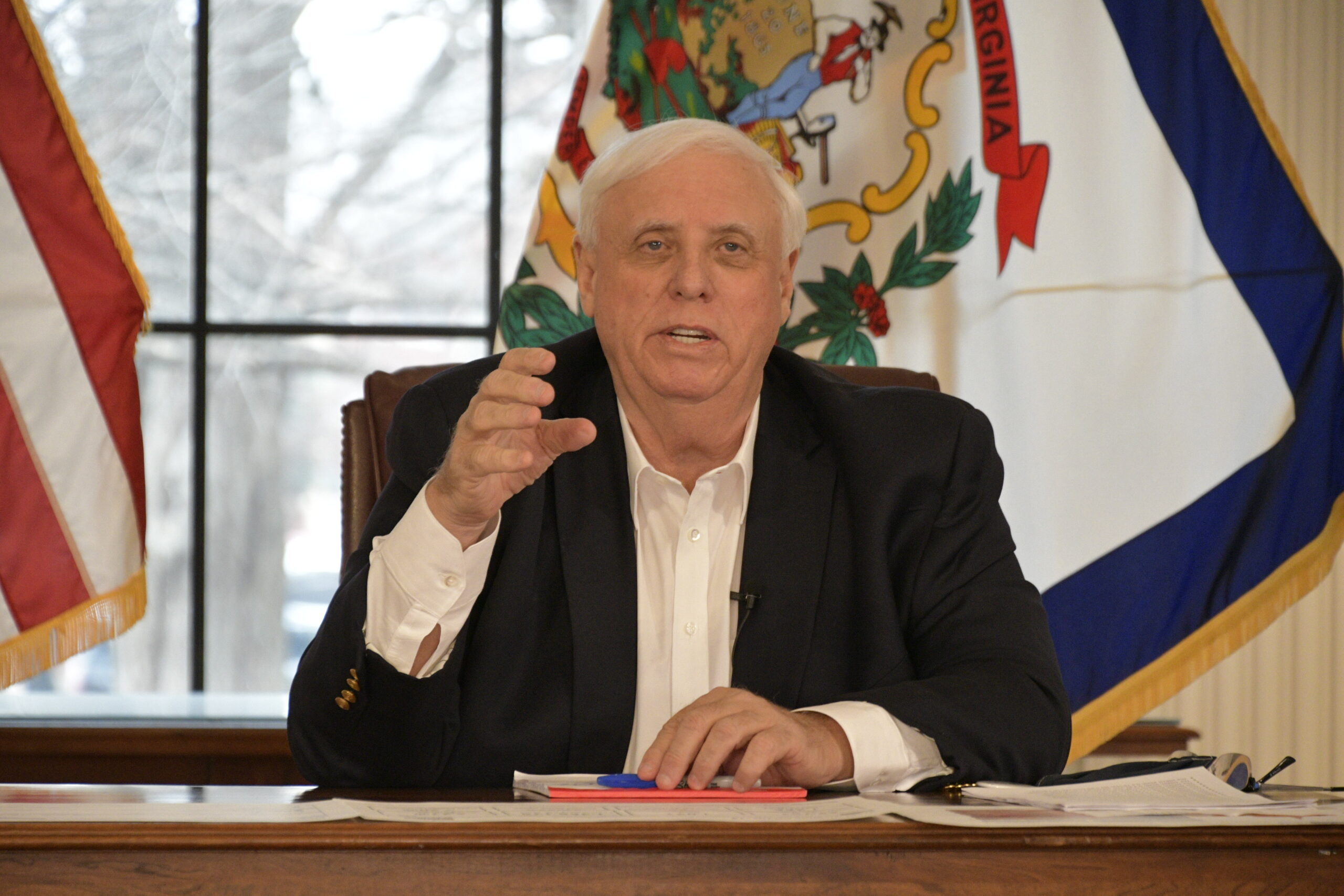MORGANTOWN — The COVID-19 vaccine and CARES Act spending dominated Friday’s briefing from the governor’s office.
Gov. Jim Justice noted more than once that West Virginia has gained national attention for unrolling its vaccine program ahead of all the other states and may be wrapping up its early parts of Phase 1 before other states even begin.
As of 11 a.m. Friday, he said, the state had distributed 15,800 vaccines, of which more than 11,000 had been administered.
He highlighted Sundale Nursing Home in Morgantown, which was one of the first nursing homes in the state to suffer an outbreak in March and is one of the first in the nation to receive the vaccine.
Resident Pat John, 93, who was featured this week in the New York Times for taking the vaccine, appeared with two Sundale officials to promote the effort. “Do not hesitate. It doesn’t hurt,” she said. “Please don’t wait.”
Sundale CEO Michael Hicks said they’ve vaccinated nearly 85% of the residents. Justice said statwide abou t85% of long-term care residents have received their first dose and about 60% of staff. But, especially for staff, that’s not enough.
Justice said the state has ordered more vaccine doses. They expect about 11,700 from Pfizer and 32,600 soon from Moderna, which was a week behind Pfizer on getting FDA emergency approval.
Justice aid Pfizer expereinced some kind of glitch and cut back initial allotments across the country. West Vriginia was expecting 21,000. Adjutant General James Hoyer said he learned about the cutback last night and informed Justice that the doses would be reduced this coming week. The reasons weren’t fully known at the time.
But contingency plans plus the expected Moderna allotment, Hoyer said, will allow nursing hoe and critical hospital workforce vaccination will be able to move forward as they wait for Pfizer to get back on track.
The Dominion Post remarked that it appears not everyone yet understands that the Pfizer and Moderna vaccines required two doses three to four weeks apart, and that the full vaccine program might not be fully complete until June-July. The Post asked if there are education plans in process, especially in the medical community.
Justice didn’t really answer the question but used it as an opportunity to again complain about Congressional inaction. The DC plan to vaccinate nursing homes isn’t supposed to kick off until Dec. 28, while full public vaccination may take through the end of summer.
“It drives me crazy the way the way a lot of these politicians act,” he said. “It takes them three weeks to figure out when they’re going to have a bowel movement. … We are moving at light speed compared to them.”
CARES money
Before moving into details on CARES Act spending, Justice noted that school athletic departments across the state are suffering from loss of football and basketball income. So through his contingency fund and the Department of Education, they are sending $4 million to all the school systems to cover lost sports revenue and also help bands, choirs and clubs.
In response to a MetroNews request at a previous briefing, Revenue Secrerary Dave Hardy outlined how CARES money is getting spent as the Dec. 30 deadline approaches (barring a current Congressional proposal to extend it for another year , which hasn’t been voted on).
The total CARES package was $1.25 billion, he said. They took breat care to allot it, seeking outside review form a legal firm and an accounting firm, with final review from the state auditor.
- $30 billion went to small business grants
- $50 million went to the medical access highways program. This was carefully documented and outside legal advice was solicited to make sure this qualifies.
- $32.2 went to broadband to improve telemedicine, telework and tele-education.
- $265 million is going to cities and counties. The originial esitmate was $200 million, they’ve spent $250 million and will need the rest for the final two weeks.
- $10 million went to resurrecting Fairmont Medical Center under new WVU leadership.
- $16.5 million went ot public service districts for unpaid utility bills. These payments go straight to the PSDs.
- $40 million for National Guard pandemic response.
- $240 million to reimburse state pandemic expenses. Hardy called this the “deep dive.” As of June 30, they’d spent $65 million and reimbursed themselves $57 million to balance the Fiscal Year 2020 budget. They can remimburse another $187 million of eligible expenses and plan to.
- $74 million to cover COVID testing paid by the Department of Health and Human resources.
- $445.7 million for unemployment benefits. As of March 1, the trust fund had $160.4 million. Since then, the state has spent $502.2 million.
Adding to the trust fund, the state also had a FEMA match of $38 million plus $173 million in employer premiums. And as of July 1, the state was able to draw down an interest-free federal loan.
The current loan balance will be $130 million at year’s end. The state has held back CARES money to repay the loan. If the loan isn’t paid, 2.4% interest kicks in on Jan. 1. “The plan now of course, is to pay back the loan and reimburse the unemployment trust fund.
The $445 million allotment will pay off the loan and open calendar year 2021 with a $315 million trust fund balance. That blimportant, he said, because they expect to pay out more benefits in January through March.
All that leaves a cushion of about $46.5 million, he said. There are various plans to spend it by year’s end, including the governor’s $2 million share of the sports money mentioned above. That leaves a cushion of $39 million for which there are additional plans.
“This is a miracle as far as I’m concerned,” he said. “We researched and we worked hard.”
Tweet David Beard@dbeardtdp Email dbeard@dominionpost.com




